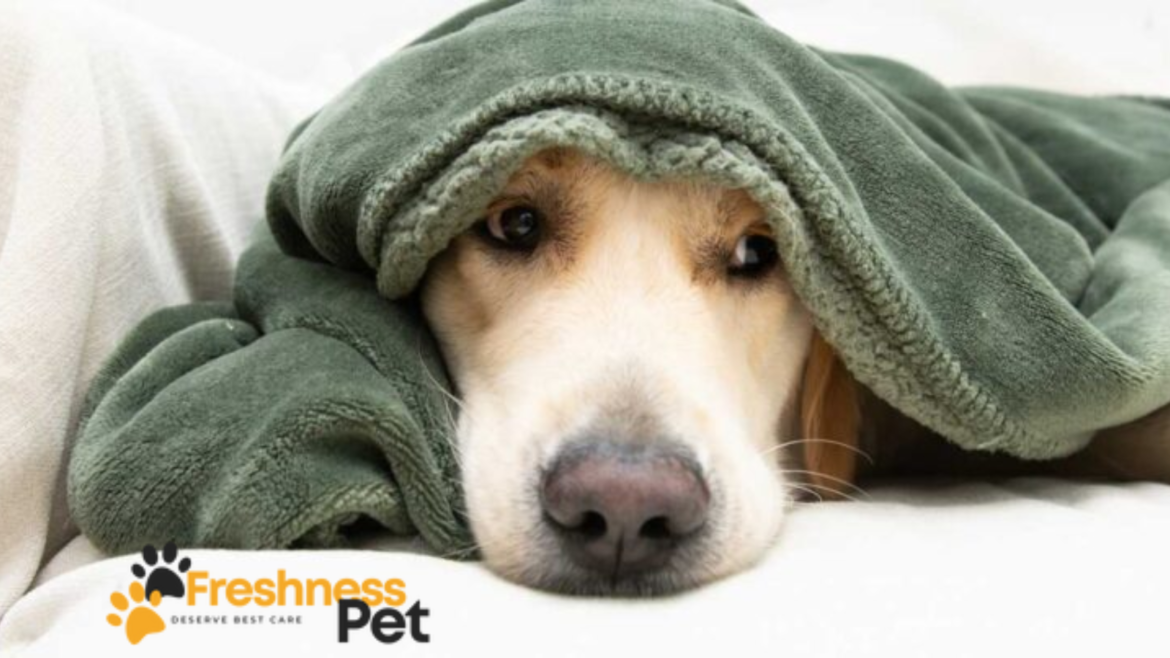Respiratory illnesses among dogs are serious because they find trouble in breathing and feel very sick. If we do not treat breathing problems immediately, these respiratory diseases become severe and even be life threatening for dogs. In this article, we will explain how inflammation affects the throat, lungs and oxygen transport in dogs. Then discuss the most common causes of breathing diseases in dogs and preventive measures to mitigate the risk of respiratory troubles.
Note: This article is written in such a way that it caters all the issues that many dogs face in their lives. And how can dog owners improve the lifestyle to reduce the chances of asthma and persistent coughing in their canine friends. So let’s read the entire article.
How does Respiration become difficult? – Dog Canine Respiratory Disease
Respiratory illness affects different parts of the breathing system of dogs which include bronchi, trachea and lungs. The infection starts in the mouth and throat of the body which makes it hard for dogs to breathe in air. Then the illness moves down the windpipe into tubes that carry polluted air to the lungs. These tubes are important parts of the respiratory system which resemble the branches of a tree and are known as bronchi. Once the illness enters into the lungs through bronchi, then it causes inflammation and further travels to the tiny air sacs called alveoli. As the alveoli present in the lungs is mainly responsible for exchanging oxygen with carbon dioxide in the blood. But in the case of respiratory illness, the oxygen in the lungs is not absorbed properly. This happens because the illness swells and blocks the airways and air sacs(alveoli) of a dog’s respiratory system. In this way, the oxygen is not able to move from the lungs into the bloodstream. As a result, your pooch may not get enough oxygen which leads to breathing problems and leads to coughing and wheezing.
Causes of Respiratory Illnesses in Dogs:
Following are the main causes of respiratory illnesses in dogs:
1. Pollution:
If your dog lives in polluted places, then harmful particles and chemicals present in the air are introduced into its nose, mouth, trachea(windpipe) and lungs. Cities and densely populated areas contain more air pollution due to industrial activities, construction and smoke. Dogs living close to the busy roads or highways are exposed to exhaust fumes which affects the dog’s respiratory health. Many dog owners live in the residents near to the factories and industrial plants that contain chemicals, smoke and other emissions that impact your loyal companion.
2. Pesticides and Fertilizers:
Farmers use pesticides and fertilizers in their crops which contributes to pollution that affects the dogs living in villages. When these dogs come into contact with a treated field then it irritates their respiratory system. Pesticides contain organophosphates which cause respiratory problems, including coughing if inhaled by the dogs.
3. Poor Ventilation:
Homes and buildings which do not allow sufficient fresh air moving through a space, makes it stuffy and harder for dogs to breathe. Many dog owners use bleach, ammonia, window cleaners, disinfectant sprays and furniture polish, which is harmful for respiration of dogs.
4. Dirty Places:
People often ignore cleaning the areas under the refrigerator, stove and dishwasher that can collect crumbs and spills. Dust and debris are accumulated behind the couches, beds and other appliances of the house. Allergens and dust particles are collected in vents and air filters if housekeepers neglect these areas. Decomposed food present inside the opened trash cans typically harbor odors and bacteria. Your pooch bedding and stuffed toys can become soiled and gather bacteria if not regularly cleaned. Similarly, it has been seen that attics and basements may accumulate dust, mold and pest due to lack of ventilation in many houses. Dust and debris then get into the air and cause coughing or sneezing in dogs.
5. Pet Waste:
Pets like dogs excrete out feces and urine which may harbor bacteria within just a few hours if they are left uncleaned. These waste products dry out and tiny particles become airborne after 24 to 48 hours if they are not cleaned up promptly. If your canine friend breathes in these particles, it can make it sick and cause problems in breathing. Salmonella, E. coli, Campylobacter, Clostridium, Leptospira are the most common bacterias that are found in pet feces and urine.
6. Crowded Pet Stores:
Many dogs are housed in pet stores for the purpose of selling to the new customers who are currently looking for a new pet. These dogs are kept there so that potential buyers come and interact with them. These pet stores are crowded with many dogs which increases the spread of respiratory pathogens like Bordetella Bronchiseptica, which causes kennel cough. Similarly, due to limited ventilation in pet stores leads to irritation in respiratory systems of dogs. Moreover, the stress of being in a noisy environment and unfamiliar environment along with other animals weakens the immune systems of dogs. Thus the weakened immune system is more susceptible to respiratory infections.
7. Mycobacterium tuberculosis:
It is the type of a bacteria which causes tuberculosis (TB) in dogs and grows slowly inside the lungs. If one of the dogs is infected and releases tiny droplets that contain bacteria which are inhaled by other dogs, then it spreads.Many times, healthy dogs use the bed of infected dogs with TB. The bacteria present in the saliva of infected dogs lingers on the bedding and potentially spreads to other dogs.
8. Certain Foods
Some dogs cannot tolerate the intake of lactose which develop respiratory symptoms like coughing and wheezing. Foods like wheat and corn stimulate allergic reactions and impact the respiratory system of many dogs. Similarly, if you add artificial colors and flavors to the dog’s food then it leads to respiratory issues. Moreover, if your dog has eaten spicy food, then it will irritate its throat and respiratory tract, potentially leading to breathing problems.
Preventions and Precautions
1. Protect Your Dog from Pollution in a Polluted Area
Many dogs have to live in a polluted area, however there are several things that pet owners can do to keep their dogs healthy. First of all, use air purifiers with HEPA filters that cleans your home from indoor air pollution. In the morning, open the windows and allow fresh air to come into your house. Make sure you use non-toxic cleaning products that reduce the dust and allergens present in your home. Next, try to walk along with your dog during the early morning when the air is less polluted. However, you can also select the timings late in the evening and should avoid walking on days when the air quality is very poor. Keep your dog away from busy roads and industrial areas while you’re walking with your dog.
2. Protecting Your Dog from Pesticides and Fertilizers in a Village Setting
There are several things you can do to keep your dog safe from pesticides while you are living in an agricultural place. First, do not let your dog go into the fields where chemicals are used. You need to find out the timings and days when farmers apply pesticides and keep your dog away from those spots on specific days. If you and your pooch come across the fields where pesticides are applied, then you must give your dog a bath to clean off any chemicals.Make sure you watch any signs and symptoms of coughing or sneezing and see a vet immediately if needed. It is also important that your dog does not eat grasses or plants from treated areas which prevents it from respiratory illness.
3. Improving Air Quality for Your Dog in a Well-Ventilated Home
Your dog may keep safe and breathe normally, if you make sure that your home gets plenty of fresh air. This happens when you open windows and use fans to help move air around. Do not use strong cleaning products especially ammonia and bleach which are harmful for your dog’s breathing. Rather than using harmful chemicals for cleaning purposes, you can use pet friendly cleaning products. Once you have applied these products then you must air out your home well. In addition to this, you can also use an air purifier which removes dust and other pollutants and makes the air more healthier for you and your pooch.
4. Maintaining a Clean Home for Your Dog’s Health
Pet owners may keep their dogs healthy by reducing dust and allergens and clean the areas regularly at houses where dirt can collect. Make sure you clean under the refrigerator, stove and dishwasher and dust which is present behind couches and beds. You need to check if the air filters are trapped with debris and dust, then wash it to keep the air clean. Keep the trash cans closed and remove all decomposed foods and trash to avoid bad smells and bacteria. You must wash your dog’s bedding and toys oftenly to prevent them from getting dirty. Also, keep in mind that attics and basements in your house are well ventilated and cleaned. This will stop the molds and pests from building up.
Few Words
In summary, dog canine respiratory disease is a widespread issue that has affected many dogs. When dogs inhale pollutants present in the air that mainly come from debris, bacteria, decomposed foods, pollution, fertilizers and pesticides, their lungs become infected. Therefore, you must not neglect certain areas in your home and remove dust and debris which gets into the air and cause respiratory problems. Smelly trash and dirty pet beds typically spread germs into the air and affect the respiration of dogs. Make sure that you keep away your dog from treated areas where fertilizers have applied. Also, do keep in mind that air vents must be cleaned otherwise dirt makes the air less clean, which can be harmful for a dog’s lungs.



